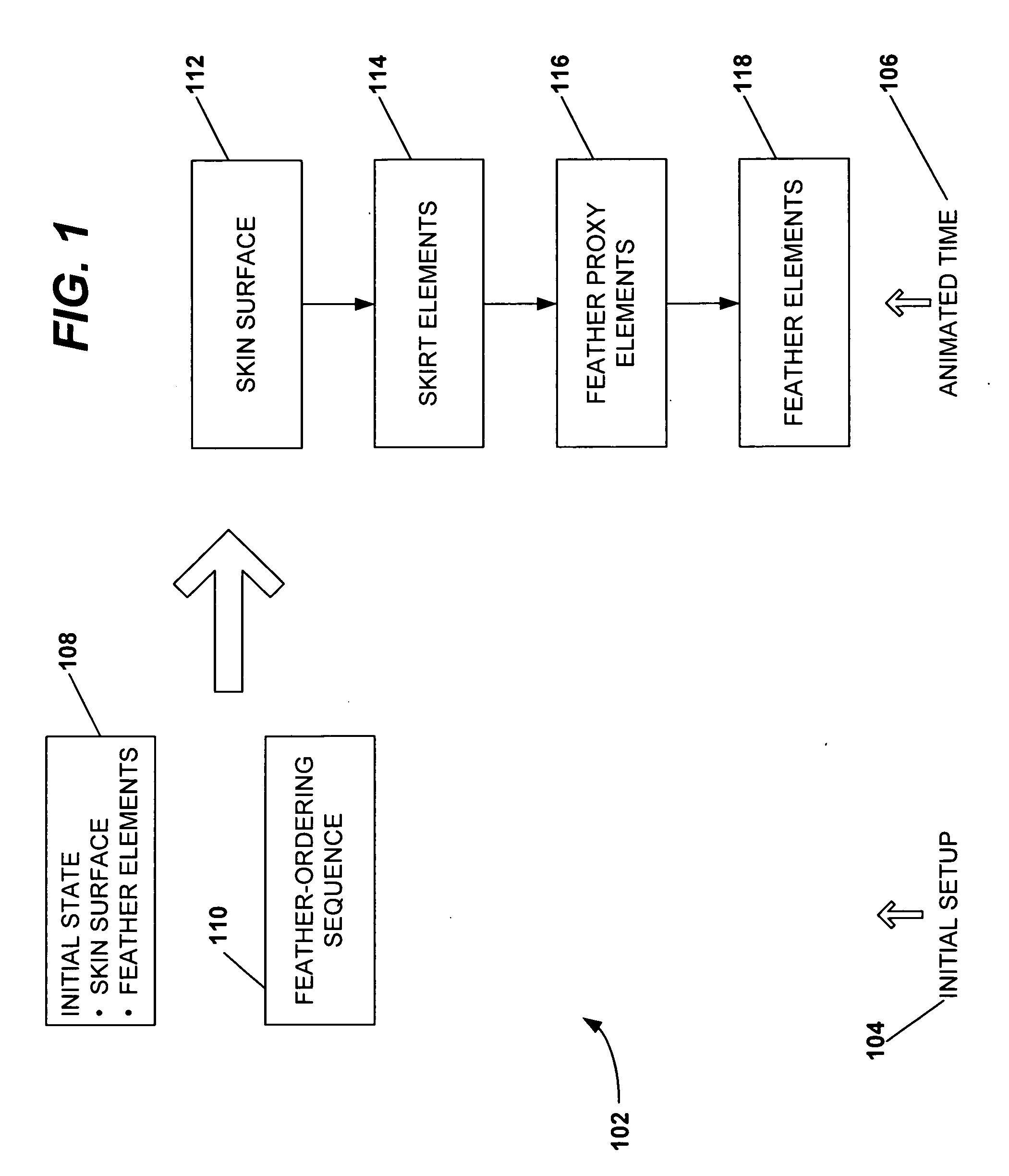Layering method for feather animation
a feather and animation technology, applied in the field of animation technology, can solve the problems of unrealistic animation, particularly for feather animation, and the subject of feathers, and achieve the effect of improving the animation of feathers
- Summary
- Abstract
- Description
- Claims
- Application Information
AI Technical Summary
Benefits of technology
Problems solved by technology
Method used
Image
Examples
Embodiment Construction
[0052] An embodiment of the present invention is shown in FIG. 1. An exemplary method 102 of animating feather elements includes determining positions of feather elements 118 at an animated (e.g., future) time 106 from an initial setup 104. In the initial setup 104, positions for an initial state 108 are specified for a skin surface and for multiple feather elements. In this context the positions can be any characterization for the placement of geometric elements including, for example, a parameterized Cartesian representation in two or three dimensions or a more complex basis-function representation. In some contexts, the placement of an array of elements (or points) defines a geometric shape or surface in the animation process. In general this geometric characterization (e.g., 3D scene data) should be usable as an input for a subsequent rendering operation. (Computer Graphics: Principles and Practice (2nd ed.), J. Foley, A. van Dam, S. Feiner, and J. Hughes, Addison-Wesley, 1990) ...
PUM
 Login to View More
Login to View More Abstract
Description
Claims
Application Information
 Login to View More
Login to View More - R&D
- Intellectual Property
- Life Sciences
- Materials
- Tech Scout
- Unparalleled Data Quality
- Higher Quality Content
- 60% Fewer Hallucinations
Browse by: Latest US Patents, China's latest patents, Technical Efficacy Thesaurus, Application Domain, Technology Topic, Popular Technical Reports.
© 2025 PatSnap. All rights reserved.Legal|Privacy policy|Modern Slavery Act Transparency Statement|Sitemap|About US| Contact US: help@patsnap.com



